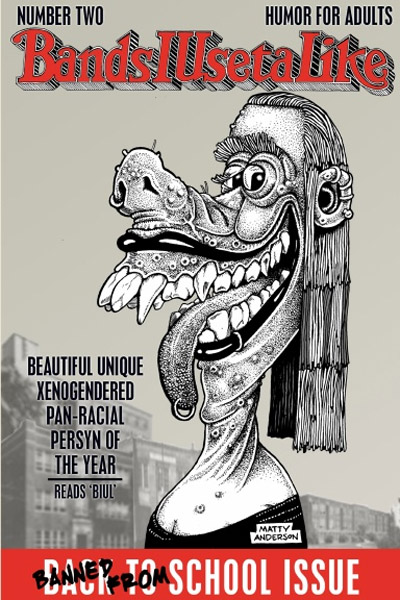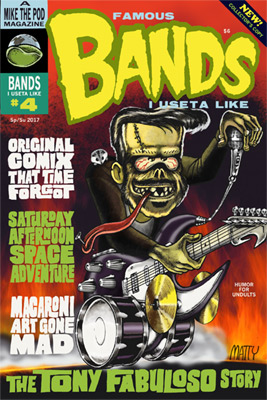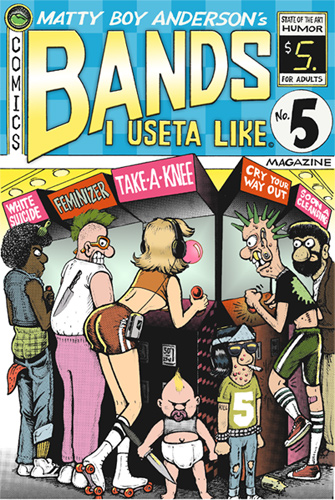1941 is a not-very-good comedy from 1979, directed by a young Steven Spielberg. It has an all-star cast; John Belushi, Robert Stack, Slim Pickens, Ned Beatty, and Christopher Lee, just to name a few. The score, from the dependable John Williams, is rousing and bombastic, with a great send-up of Glenn Miller that plays before a “zoot-suit riot”. The movie is a farce about a small California town that descends into chaos when a Japanese sub appears off the coast, just after the attack on Pearl Harbor.
The destruction effects, and Slim Pickens faking a forceful shit by chucking a boot in a toilet, greatly endeared 1941 to me as a boy, to the point where I drove my dad nuts with it. He knew it was a stupid, leaden bomb. I saw Dan Aykroyd with nylon hose on his head and oranges in his eyes screaming “I’m a bug”, and I lost my mind. Then I tried it myself one day, and I almost lost my eyesight.
Eddie “Mandark” Deezen turns up as a geek with a ventriloquist dummy, and after they both end up in the harbor, the dummy comes up for air first, with water streaming from its nostrils.
There you go: in three paragraphs, I told you all the good parts of 1941.
The book was way better.
The director even sort of admits to as much, in the foreword. It’s not typed; it’s hand-lettered, by Irwin Hasen, who also provided breezy art to accompany the text. In the image, Spielberg sits atop the Hollywood sign, laughing at the script for 1941. Below him is a tableau in front of the sign, which he is directing, with a megaphone choked with money dropped by a plutocrat in a plane marked “$”. He is huddled with two hookers, one of whom is doing a popper, the other rolling a joint. A giant toaster on a railroad pops up two grinning Asian stereotypes, lobbing grenades. They and a grinning Buddha caricature are being barbecued by a GI’s flamethrower.
Whatever that means, if you had any doubts regarding Spielberg’s sense of humor, the foreword should remove them.
This is the city– Los Angeles, California. Something big is about to happen here. Something so big that nothing that follows will ever be the same. Something bigger and more incredible than anything you’ve ever seen before. It’s called 1941.
One of the questions I get asked a lot as a film director is, “how did you come to make this particular movie?” I first encountered the screenplay of 1941 while blasting clay targets at the Oak Tree Gun Club. I was immediately attracted to it because of its highly illiterate nature– it appeared to have been written by two guys whose only excursions into literature had been Classic Comics. My initial instincts were not far off. I subsequently learned that the sole writing experiences of the authors had been spray painting the walls of public buildings with profanity and ethnic slurs. I continued to read their first-draft screenplay at a local junk-burger dive in the San Fernando Valley. Moments of the script were so funny that I vomited from laughter. It was this feeling of nausea that I felt moved to translate into cinematic imagery.
History was my least favorite subject in school; and with 1941, I saw an opportunity to do something about it. I believe it is an accurate testimonial to our way of life that someone like me, who flunked every history course, could be given millions of dollars by two major American corporations to spend on a gigantic, irresponsible historical epic.
1941 also makes a strong social statement. I felt that after the war in Vietnam and the disillusionment the nation experienced, it was important to remind people that war doesn’t have to be a trip up the river to hell; it could also be a lot of laughs. I believe that 1941 stresses the positive aspects of global conflict, which is something we tend to forget about these days.
Rigid criteria were used in selecting the cast and crew for a project of this bulk; and I am proud to say that not one person who worked on this picture has a high school diploma. The cast was selected on the basis of good looks, bad taste, and low moral character. Robert Stack was chosen to portray General “Vinegar Joe” Stilwell because as Eliot Ness he once said, “Rico, bring the car.” Dan Aykroyd was selected because he was the only actor we could find who had committed to memory the five basic components of the 1937 General Motors electric refrigerator. Other actors were cast based on their readiness to make kickback deals with both me and the producers.
Because of my reputation for making successful big-budget motion pictures, Columbia and Universal forced me to spend $30 million on 1941. The film’s actual cost was $12.5 million. The rest of the budget was spent on prostitutes and drugs. In recent months, the question has arisen, is 1941 worth $30 million? That is not the important question; what’s important is, is it worth four bucks? I think so.
Having made Jaws and Close Encounters, people asked me, “when are you going to make an intimate, personal film that shows who the real Steven Spielberg is?” Well, 1941 is my most intimate film– the statement I’ve always wanted to make. If after seeing it you don’t understand what it is trying to say, I suggest you see it four or five more times.
In every filmmaker’s life, a 1941 invariably comes along. I can see 1941 more as a cleansing experience. The one possible way I can make you forget all the good things I’ve done in motion pictures.
Be merciful.
Steven Spielberg
Los Angeles, California
September, 1979
Thanks to Heavy Metal magazine, we have a lush print companion to Spielberg’s legendary bomb. It was lavishly illustrated, in painted collages, by Stephen Bissette, Rick Veitch, and Allan Asherman, from an original story by Robert Zemeckis, Bob Gale (director and writer of Back To The Future, respectively) and John Milius (legend). These talents combine to brilliantly evoke the chaos of WWII, and they kick it all off with BOMB-ASS TITTIES.
In the movie, the titties were those of Susan Backlinie, which were consumed by a shark in Spielberg’s Jaws. Well, one was, according to Peter Benchley’s novel. Have you ever read it? It’s pretty fucked up, right off the bat.
Anyway, 1941 begins with a parody of Jaws’ terrifying opener, music and all, with the Japanese sub in the place of the shark. Backlinie reprised her role as the busty nude woman, four years after Jaws came out. Is it not weird for a major director to do something self-referential like that? Oh yeah: 1979. Poppers and coke.
In the illustrated version, resemblances to the film actors and actresses are fleeting at best. As soon as Belushi’s “Wild Bill” Kelso arrives (literally “crashing” the picture), everything becomes MAD-magazine barrage comedy. The collage pages use stacks of ads from wartime periodicals, including anti-VD and “Jap” propaganda. Even though there’s blood and gore by the bucketful, no one is seriously injured; only property and good taste are destroyed. (The film was rated PG, but we’re talking 1979 PG.)

Enemy combatants are portrayed like on Red Scare bubblegum cards and other wartime ephemera. This is the Slim Pickens “shitting” scene.
The zoot-suit riot gives the artists carte blanc to go into image overload. I am a big admirer of Rick Veitch’s “Abraxas and the Earthman” in Epic Illustrated, and although 1941 is less-tightly rendered, it retains the vivid juiciness of his other art. Bratpack showed how well Veitch could do black and white, which he does here as deftly as he does color.
The subplot with Wally and Betty is reduced to its base elements: a damsel imperiled by a rapist. Wally has a bad run-in with a psychotic soldier who hates egg. This soldier becomes so enraged by a morsel of egg on his uniform that he devolves into a slavering rapist, who thinks nothing of killing in his pursuit of the lily-white and theoretically unspoiled Betty.
The major set pieces of the film are all relatively identifiable. Tim Matheson and Nancy Allen crash a plane in the La Brea Tar Pits, after being shot down by “Wild Bill” Kelso. Eddie Deezen and vent figure are atop a Ferris wheel, looking for Christopher Lee and Toshiro Mifune’s submarine. The army leaves an anti-aircraft turret on Ned Beatty’s lawn, which he decides to use, against the meek protestations of his wife.
I can’t really tell who’s supposed to be Warren Oates, but it doesn’t really matter. I would much rather read this book than rent 1941 again. The last time I did was around seven years ago. Despite its efforts, it is funless. The closing credits feature intermittent explosions. Because by that point, why not.


















You must be logged in to post a comment.